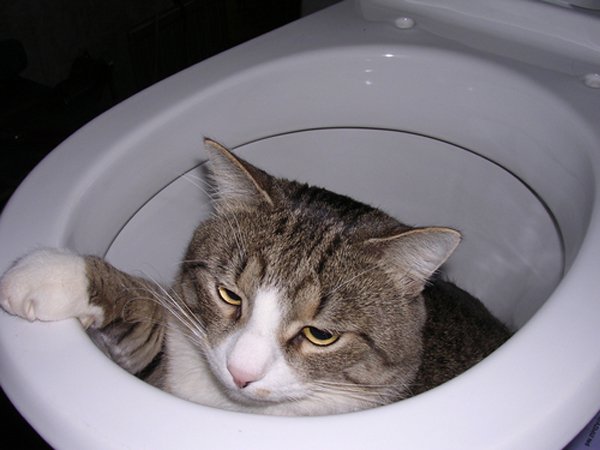Just about every person seems to have their unique opinion when it comes to How to Dispose of Cat Poop and Litter Without Plastic Bags.

Intro
As pet cat owners, it's necessary to be mindful of exactly how we get rid of our feline buddies' waste. While it might seem hassle-free to flush pet cat poop down the commode, this method can have damaging repercussions for both the setting and human wellness.
Environmental Impact
Flushing cat poop introduces hazardous microorganisms and parasites into the water supply, posing a significant threat to marine ecological communities. These impurities can negatively impact aquatic life and concession water high quality.
Health Risks
Along with ecological concerns, purging feline waste can also posture health and wellness risks to people. Cat feces might include Toxoplasma gondii, a bloodsucker that can cause toxoplasmosis-- a possibly severe ailment, particularly for expectant women and individuals with damaged body immune systems.
Alternatives to Flushing
Fortunately, there are much safer and a lot more liable means to deal with cat poop. Think about the complying with options:
1. Scoop and Dispose in Trash
One of the most typical technique of taking care of pet cat poop is to scoop it right into an eco-friendly bag and toss it in the garbage. Make sure to utilize a devoted litter inside story and take care of the waste without delay.
2. Use Biodegradable Litter
Choose biodegradable pet cat trash made from materials such as corn or wheat. These clutters are eco-friendly and can be safely dealt with in the garbage.
3. Bury in the Yard
If you have a yard, take into consideration burying pet cat waste in an assigned location away from veggie gardens and water resources. Be sure to dig deep adequate to prevent contamination of groundwater.
4. Mount a Pet Waste Disposal System
Invest in a family pet waste disposal system particularly made for feline waste. These systems make use of enzymes to break down the waste, reducing odor and ecological impact.
Final thought
Responsible animal possession expands beyond giving food and shelter-- it also entails appropriate waste management. By refraining from purging cat poop down the toilet and selecting alternate disposal methods, we can decrease our environmental impact and secure human health.
CAN I FLUSH MY CAT'S POOP DOWN THE TOILET?
Always avoid flushing cat poop down the drain because not only could it potentially contain harmful parasites called toxoplasmosis, the litter could sit in your line and lead to a clog.
Plenty of waste gets flushed down your toilet every day, so what harm could a little cat poop and cat litter do? The answer is a lot, which is why you never want to send it down your drains.
Can I Flush My Cat's Poop Down The Toilet?One of the biggest problems with flushing your cat’s presents is the harmful parasites in your feline’s stool called toxoplasmosis. Extremely dangerous for humans, especially pregnant women and people who are immunocompromised, these parasites can cause a multitude of problems for unborn babies and even cause death or miscarriage if the infection happens early. That’s why you should always avoid touching cat poop. Also, water systems are not equipped to handle toxoplasmosis and are unable to destroy the parasite before it’s sent back into the environment, potentially jeopardizing the health of local area wildlife, specifically marine life.
Flushing cat poop could also lead to a future drain clog. Try as you may to eliminate any litter from it, there will always still be some stuck on there – and even if it says flushable on the label, it’s not! Cat litter is made up of bentonite clay, which has the tendency to harden when wet, creating a thick, almost cement-like quality. Cat litter that ends up down the drain can expand from the moisture in the pipes and then harden, blocking any wastewater. If you have a septic tank or a cesspool, it cannot handle cat litter either, no matter what kind. If it solidifies in the tank, in any of the system’s major parts like the inlet baffle, it’ll create some expensive problems.
The best way to dispose of cat poop safely is to scoop it into a bag and throw it into the trash – and ways of dealing with the smell include adding baking soda and replacing the box more.
Now that we’ve explained the potential harm that flushing cat poop can cause to you and your drains, you might be wondering the best way of dealing with it. Unfortunately, it’s the old-fashioned way of scooping it into a bag and then placing it into a trash can. They also make pet-proof trash cans that lock in the smell, so that you don’t have to always immediately take it out. If you’re tired of smelling the litter box after even just one use from your feline, there’s things you can do to help combat that smell. Adding baking soda to the litter will reduce smells, but just don’t add too much or your cat will no longer want to use the box. You could also replace the box more frequently, at least once a year, as those smells can just seep inside the scratch marks. Lastly, try changing to a new litter formula – some are better with smells than others.

Do you enjoy reading about Don’t flush cat feces down the toilet? Make feedback down below. We'd be glad to hear your thinking about this page. In hopes that you visit us again later on. Sharing is caring. Helping others is fun. Many thanks for taking the time to read it.
Set Up An Appointment